The following post is a contribution from staff member Heather Lacy. As with any herbal remedies, please always be 100% certain of your plant identification and ensure safe and proper use by consulting a trusted herbal resource or herbalist before using.
Fall is upon us. As the days grow shorter and the air takes on a subtle chill, we are asked to shift our focus inward in preparation for winter. Likewise, the plants around us pull their energy back into storage, out of showy foliage and flowers, and into underground roots. As blooms fade and leaves brown and spiral, roots swell with nutrients and life, making Fall the ideal time to harvest below ground goods.
Our starring guest today is known by many names. Casually, this plant responds to Gobo or Burdock, while formerly being referred to as Arctium lappa. One only needs to get a signature Burdock ‘Bur’ stuck in their hair or clothes once to understand how this plant got its name and how it later became the inspiration behind the ever-handy Velcro.
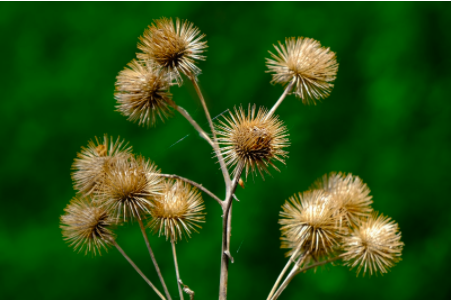
Burdock seed heads or burs
Beyond having seeds with an inspiring affinity for attaching to anyone and everything, Burdock also serves many more pleasant functions, the root being a tasty wild edible and gentle but powerful herbal medicine source. It is most known for its cleansing properties, long being used to help clear up skin ailments such as acne and gently support the liver.
Burdock can get quite tall and is recognizable in part by its broad, rough-looking, woolly leaves. However, there are look-alikes, so it’s essential to spend some time getting to know the plant before breaking ground. An essential piece of safe and ethical harvesting is proper identification, as well as being conscious of pesticide usage, and status of plant stands in the area (i.e., is it endangered?).
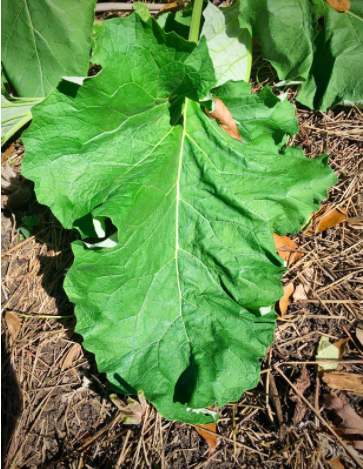
Burdock Leaf
Once we have confirmed ID and status, we are ready to begin!
Possessing a large taproot that can reach up to 2 feet underground, Burdock takes patience and determination to harvest. After carefully excavating as much of the root as you can, perhaps using a pitchfork and shovel to help, It is time to process your plant material.
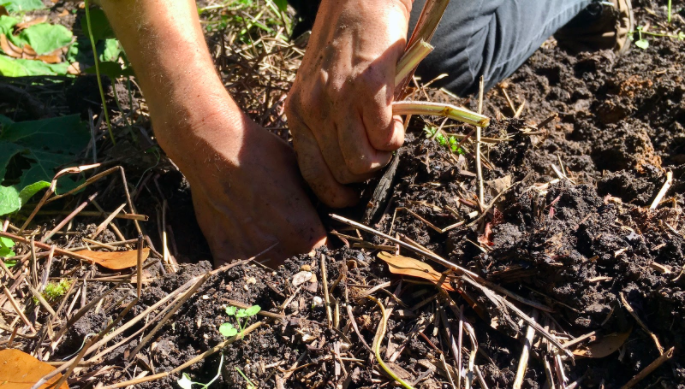
Harvesting
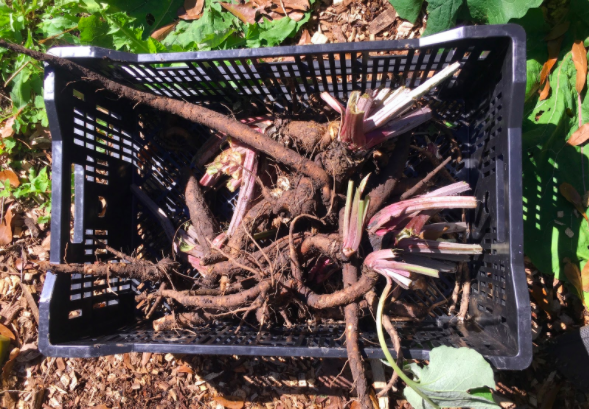
The Harvest
STEP 1: Wash
Thoroughly wash your roots using clean water. It helps to use a small brush or toothbrush to get into all those nooks and crannies!
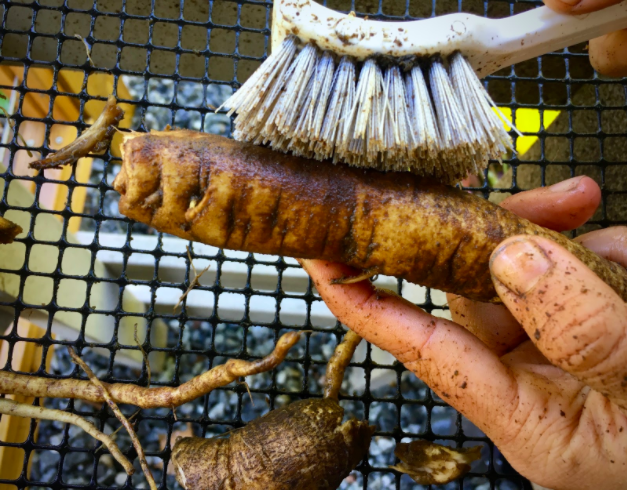
Scrub. Then scrub some more.
STEP 2: Chop
Using a knife, slice the roots into small pieces. It is always best to chop up roots as soon after harvest as possible. Once they dry, they become challenging to cut!
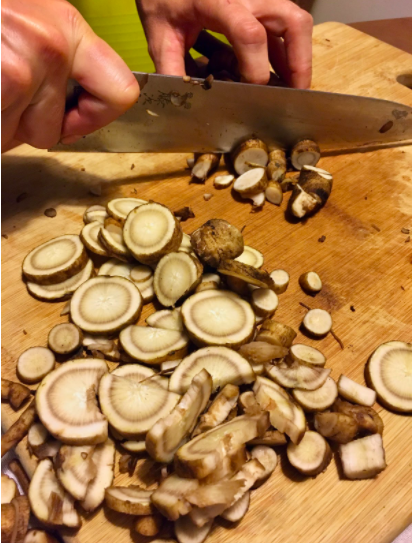
Burdock slices
STEP 3: Preparation!
Burdock makes a lovely wild food. Try it simply cooked in oil or butter, or perhaps try something a little more involved, such as this hearty soup.
For medicinal use, there are many wonderful methods of preparing Burdock. My current preferred method is to make a long-steeped tea or infusion. The process is as follows:
- add at least 2 tsp of fresh root (or 1 tsp of dried root) to a clean mason jar or container
- bring 8oz of water to a boil
- Pour boiled water over top of the roots
- Cover and steep until cool (about 3-4hrs)
- Strain, add honey if desired, and enjoy!
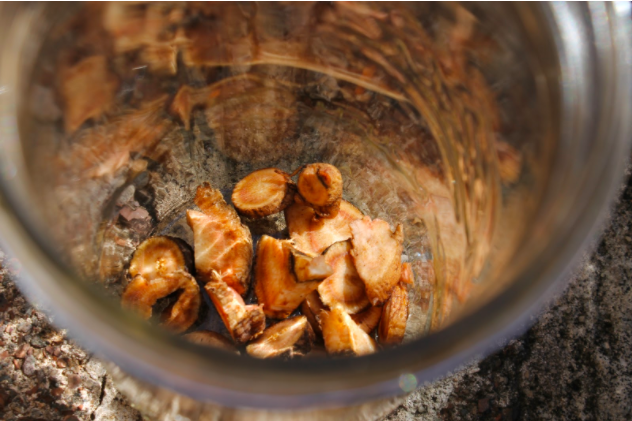
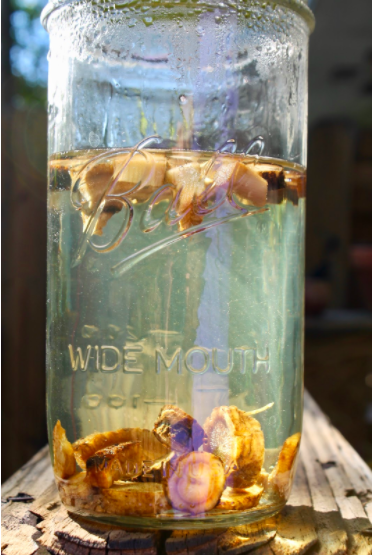
STEP 4 (optional): Dehydrate
To preserve for longer, root pieces can be dried in a dehydrator or the oven at the lowest temperature. Store dried root in a sealed container and steep or rehydrate as needed.
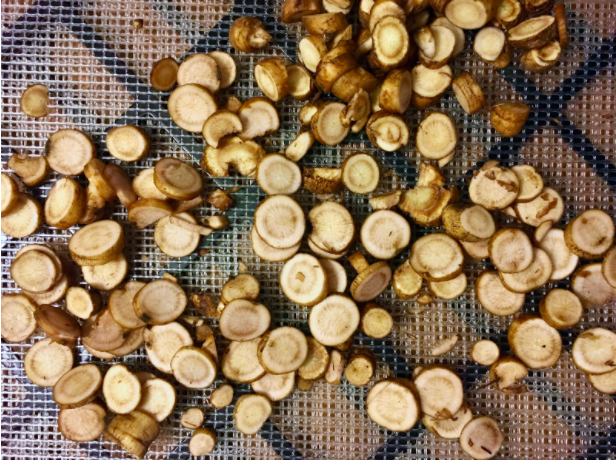
Burdock root chopped and ready to be dehydrated